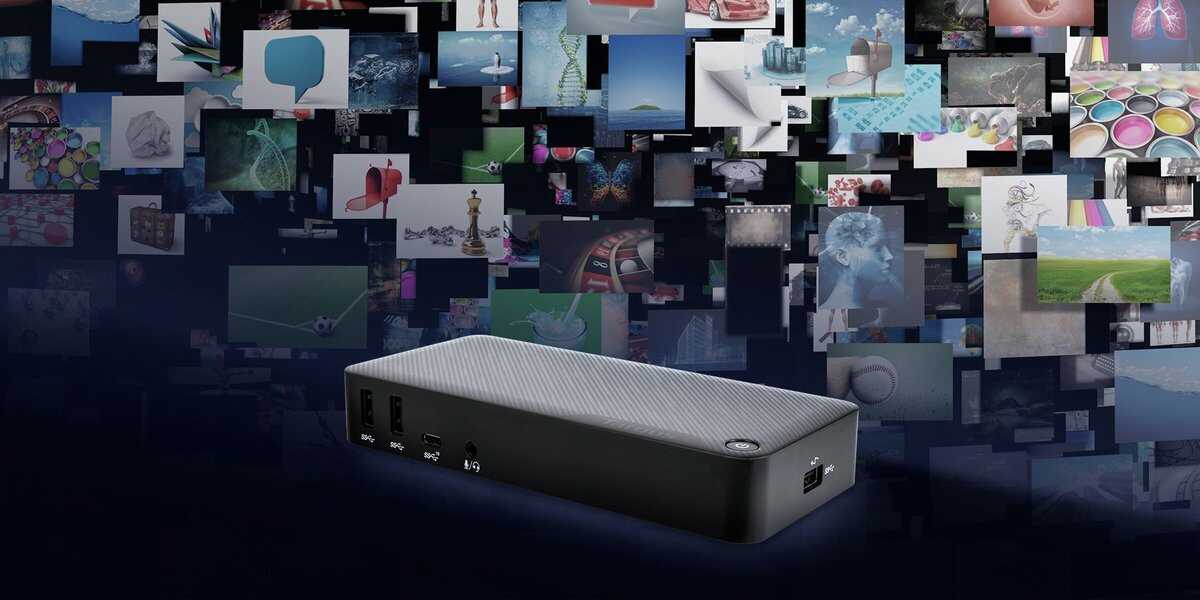The Most Compatible USB-C Docking Station DOCK430 Application Note

Targus has released the DOCK430 USB-C™ Multi-Function DisplayPort™ Alt. Mode Triple Video Docking Station with 85W Power that supersedes the extremely versatile Targus DOCK410. While USB Type-C Alternate Modes (including Thunderbolt) are not universal (cannot be converted to Type-A) the DOCK430 is nearly universal because of its universal Power Delivery capabilities and Multi-Function DisplayPort feature set.
Video Performance
The DOCK430 is an economically favorable alternative to other Type-C technologies supporting uncompressed video like Thunderbolt, Targus DOCK220, and priced similarly to Universal Docking Stations like the Targus DOCK180. The DOCK430 is great for applications requiring uncompressed rendering on a single external 4K60P UHD monitor. It can be configured to support two external 2KP60 or three external HD monitor displays of uncompressed video data with Windows PCs. Video features and performance depend on the host graphics, but the following table shows what the DOCK430 supports.
|
|
Host Graphic |
DP++ |
DP++ |
HDMI |
|
Single Video |
DP 1.2 |
3840 x 2160 p30 |
3840 x 2160 p30 |
3840 x 2160 p30 |
|
DP 1.4 |
3840 x 2160 p60 |
3840 x 2160 p60 |
3840 x 2160 p60 |
|
|
Dual Video * |
DP 1.2 |
1920 x 1080 p60 |
1920 x 1080 p60 |
1920 x 1080 p60 |
|
DP 1.4 |
2560 x 1440 p60 |
2560 x 1440 p60 |
2560 x 1440 p60 |
|
|
Tri Video * # |
DP 1.2 |
1920 x 1080 p30 |
1920 x 1080 p30 |
1920 x 1080 p30 |
|
DP 1.4 |
1920 x 1080 p60 |
1920 x 1080 p60 |
1920 x 1080 p60 |
* Requires host graphic adapter supporting Multi-Stream Transport (MST) Mode;
Mac laptops do not support MST Mode
# Some graphic adapter requires laptop monitor turned off to enable tri monitor display mode.
Universal Power Delivery
The DOCK430 supports, 5V (phones), 9V (Apple), 12V (some HP), 15V (many Dell, HP, and Lenovo) and 20V (2016 MacBook and higher performance PC) up to 85Wdc. This is more than adequate for many PC hosts and perfect for full power support of the MacBook Pro. Universal Power Delivery
Ports
The DOCK430 has two DisplayPort++ 1.4 ports and one HDMI 1.4 port for monitor display connection(s).
It also has four USB 3.2 Gen 1 (aka USB 3.0 SuperSpeed 5Gbps) Type-A Downstream Facing ports, one that supports high power BC1.2 charging (7.5Wdc @ 5V) for phones/tablets/etc.
Featuring a USB 3.2 Gen 2 (SuperSpeed+ 10Gbps) Type-C Downstream Facing port with 5W Power Delivery, you can plug a flash drive or other peripheral into this port to 10Gbps performance. You can even plug a Targus Universal Docking Station, i.e. the DOCK570, for even more display monitors, assuming your host graphics can drive them.
As with all of Targus docking stations the DOCK430 has a 1 Gigabit Ethernet RJ45 port supporting secure wire-speed LAN/WAN connectivity. This Ethernet port supports PXE, WOL, and many other Ethernet features not often found in universal docking stations.
The dock has a 3.5mm combo in/stereo out audio port.
Additional Features
The DOCK430 has the preverbal “K” lock slot and also previsions for mounting via the Targus ACX003GLZ VESA mounting bracket.
1-meter USB Type-C to Type-C compliant passive cable is included for connecting the DOCK430 Upstream Facing Type-C port to a host Type-C port, including Thunderbolt Type-C host ports.
Targus Docking Station Utilities including WiFi AutoSwitch, MAC Address Clone, and Audio/Video Configuration should work but further validation is in process at the time of this writing.
Comparison to the DOCK410
The changes may appear subtle, but some are important in many applications:
1. Higher power USB Type-C Power Delivery 3.0, 85W as opposed to 60W PD 2.0
A) Benefit: will prevent W10 Billboard (a confusing topic in itself) for a PC wanting 65W but still works at the DOCK410 60W. No billboard for PC wanting 65W or less, up to 100W.
B) Benefit: will supply MacBook Pro full power of 85W as opposed to 60W. Keep in mind however that MacBooks still don’t support MST.
2. DisplayPort 1.4 support
A) Benefit: DP 1.4 ready. While there are not allot of DP1.4 sources on the market yet, the DP 1.2 performance may improve over the DOCK410 and similar i.e. Dell WD15.
3. Three Monitor support
A) Benefit: If the host supports it, it is possible to get three separate HD rendering for three separate external monitors. Not too many hosts support three external monitors unless the PC is clam shelled (lid shut with Windows settings done correctly).
4. USB 3.2 Gen 2 support
A) Benefit: Ready for downstream devices requiring 10Gbps USB. See our previous blog post for more information.
B) Benefit: four Type-A and one Type-C (4+1) USB ports vs. 3+1 on DOCK410 (all are 5Gbps on DOCK410)
5. More stability of the technology implemented (the design)
A) Benefit: Works where Thunderbolt doesn’t i.e. Android and Chromium (Phones and Chromebooks).
Compatibility
While the DOCK430 is compatible with just about every Type-C technology, the only mode that the DOCK430 does not function with and that is regular USB (aka USB 3.0). It cannot be converted to work with a USB Type-A port containing only USB protocol, use a Universal Docking Stations like the Targus DOCK180 for that.
One of the Alternate Modes (i.e. Thunderbolt or DP) must be present for the DOCK430 Upstream Facing Type-C connection. The DOCK430 has been validated with the current releases of the following:
- Windows 10 PC with Alternate Mode (DP, MFDP, Thunderbolt) Type-C Port
- macOS MacBooks Mojave or Catalina recommended, may work but not validated on High Sierra
- Linux platforms supporting Type-C Alternate Mode technologies and Power Delivery (various)
- Android platforms supporting Type-C Alternate Modes including DeX
- Various Embedded and Thin Client OS including HP ThinPro platforms supporting Alternate Modes


